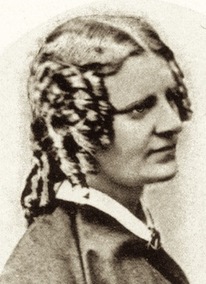 Anna Sewell was born on March 30, 1820, in Norfolk, England. Anna’s mother, Mary Wright Sewell, was a deeply devout Quaker, her religious beliefs and faith apparent throughout her career as a successful poet and author of popular evangelical children’s books. Anna’s kind and compassionate nature, as well as literary talent later in life, was undoubtedly inspired and nurtured by her mother’s own morals and values. During her early childhood, Anna was largely educated with her younger brother, Philip, at home; where she also helped extensively revise her mother’s works At 12 years old, Anna’s parents enrolled her in a formal school for the first time. Two years later, while on her way home from school, Anna accidentally slipped and fell, suffering a severe injury to both ankles. When she turned 16, Anna’s father, Isaac Phillip Sewell, took a job in the coastal town of Brighton, England and relocated the family, hoping the sea air and climate would help Anna recover. Unfortunately, Anna’s injury only worsened, likely due to inadequate medical treatments available during that time period. Anna eventually was unable to stand or walk on her own, becoming disabled for the rest of her life. Due to her difficulties with mobility, Anna started to use horse-drawn carriages more frequently, and could often be seen driving back and forth between her family home and the train station, dropping off and picking up her father from his work commutes. It was during this time that Anna further developed her love and respect for horses, becoming increasingly affected whenever she witnessed their mistreatment. A compassionate and gentle soul by nature, Anna’s concern regarding the ill treatment of horses further deepened when she read “Essay on Animals” by Horace Bushnell, pleading for the same sentiment. Having never married, with no children of her own, Anna spent many years of her adult life traveling across Europe with her mother, meeting creative types such as writers, philanthropists and artists along the way. Their collective influences, combined with Anna’s own personal interests and aspirations, lead her to follow her mother’s literary footsteps. In 1871, Anna began writing her first and only work, Black Beauty. During this time, Anna’s health deteriorated quickly, where she often required help from her mother to transcribe her words, too ill to write on her own. The book, a fictional autobiography chronicling the life of a gentle, high-bred horse, was narrated from the first-person’s perspective, giving readers an intimate glimpse into the animal’s thoughts and feelings. The story was innovative and the first of its literary genre, immediately turning the work into a tremendous success upon its publication in 1877. The author’s depiction of animal cruelty in Black Beauty resonated so greatly among readers, that it lead to many social reforms. The use of checkreins at the time -- straps used to hold horses’ heads up abnormally high, causing their necks great harm and pain -- was soon abolished in England. Across the Atlantic Ocean in the United States, anti-animal cruelty protests and demand for new animal rights legislation also grew significantly, with several states enacting laws to condemn those who inflicted abusive behaviors on animals. While Anna’s intention was never to become famous, she achieved her goal of educating and encouraging the public to treat horses with more kindness, understanding and empathy. Anna passed away in 1878, a mere five months after publishing Black Beauty. To this day, approximately 50 million copies have been sold worldwide, and it remains one of the best-selling literary works of all time, with various movie and television adaptations throughout the years. By Kim Tran |
Archives
July 2017
Categories
All
|
 RSS Feed
RSS Feed